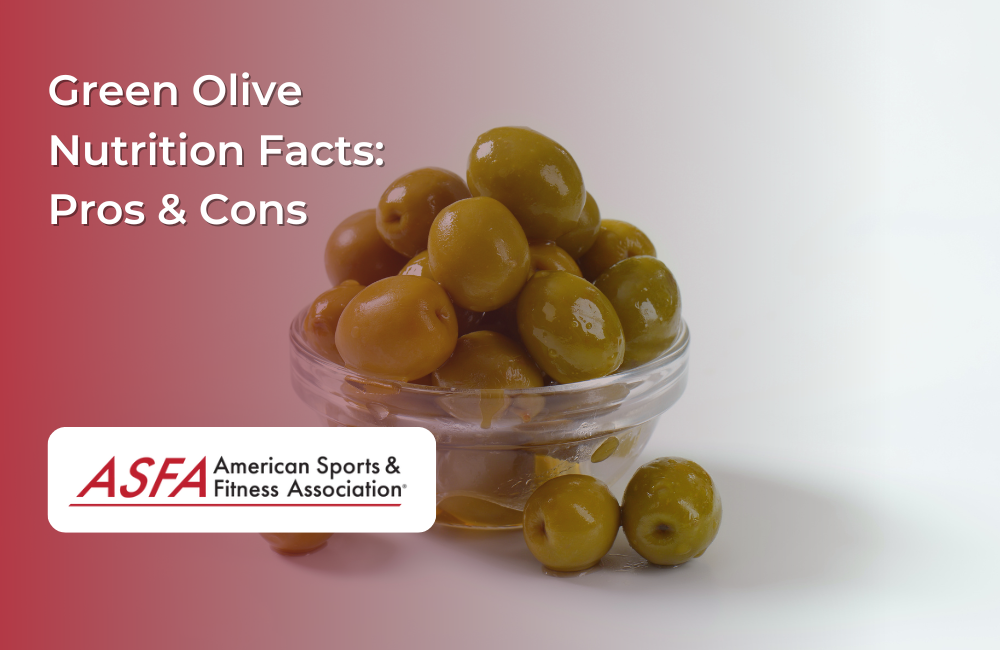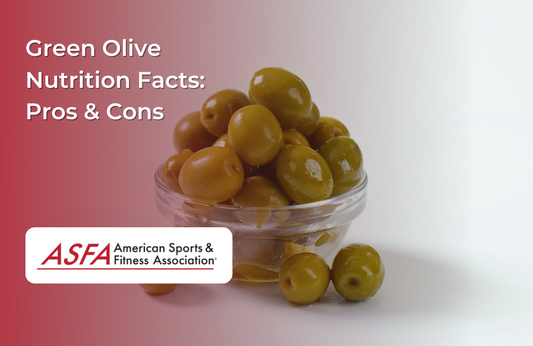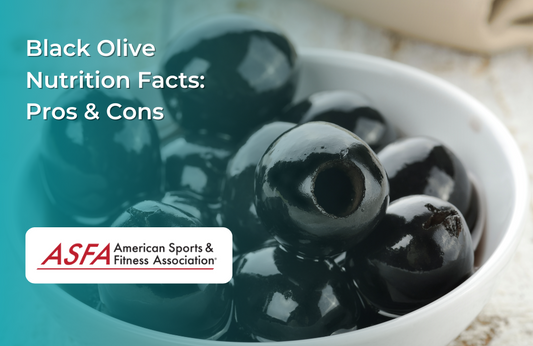Green olives are a popular Mediterranean fruit known for their rich, tangy flavor and numerous health benefits. They are a great source of healthy fats and antioxidants but can also be high in sodium due to curing and brining processes.
Green Olive Nutrition Facts: Pros, Cons, and Nutritional Profile
One 5-piece serving (about 15 grams) of green olives provides:
-
Calories: Around 25
-
Carbohydrates: 1 gram
-
Fiber: 0.5 grams
-
Sugar: 0 grams
-
Protein: 0 grams
-
Fat: 2.5 grams (mostly monounsaturated fatty acids)
-
Sodium: 250-350 mg (varies by brand and curing method)
-
Vitamins and Minerals:
-
Vitamin E: Supports skin health and immune function
-
Iron: Essential for red blood cell production
-
Copper: Supports metabolism and nerve function
-
Polyphenols: Help reduce oxidative stress
What Are Green Olives?
Green olives are a type of olive harvested before they reach full maturity. Picked while still green and unripe, these olives undergo a curing process in a brine solution to remove their natural bitterness and enhance their flavor. This curing process is what gives green olives their distinctive taste and texture. Green olives are a staple in Mediterranean cuisine, frequently featured in salads, pasta dishes, and as a savory topping for pizzas. Their unique flavor and versatility make them a popular choice for adding a burst of taste to various dishes.
Nutritional Values of Green Olives
Green olives are a nutrient-dense food that offers a range of health benefits. They are particularly high in healthy fats, antioxidants, and essential vitamins, making them a valuable addition to a balanced diet. A typical serving of green olives (about 10 olives) provides:
-
Calories: 100-120
-
Fat: 10-12g
-
Sodium: 62.4mg
-
Potassium: 400-500mg
-
Vitamin E: 10-15% of the Daily Value (DV)
-
Antioxidants: Hydroxytyrosol and oleanolic acid
These nutrients contribute to the many health benefits associated with green olives, including improved heart health, reduced inflammation, and enhanced skin health. The presence of vitamin E, in particular, supports immune function and acts as a powerful antioxidant.
Macronutrients in Green Olives
Green olives are primarily composed of healthy fats, with smaller amounts of carbohydrates and protein. The macronutrient breakdown for green olives is as follows:
-
Fat: 10-12g
-
Carbohydrates: 4-6g
-
Protein: 1-2g
The high content of healthy fats, particularly monounsaturated fats, is one of the key reasons green olives are celebrated for their health benefits. These fats support heart health, help reduce bad cholesterol levels, and provide a source of sustained energy.
Micronutrients in Green Olives
In addition to their macronutrient content, green olives are rich in several essential vitamins and minerals. These micronutrients include:
-
Vitamin E: 10-15% of the Daily Value (DV)
-
Vitamin K: 25-30% of the Daily Value (DV)
-
Folate: 10-15% of the Daily Value (DV)
-
Potassium: 400-500mg
-
Magnesium: 10-15% of the Daily Value (DV)
-
Iron: 5-10% of the Daily Value (DV)
These vitamins and minerals play crucial roles in maintaining overall health. For instance, vitamin E acts as an antioxidant, protecting cells from damage, while vitamin K is essential for blood clotting and bone health. Potassium helps regulate blood pressure, and magnesium supports muscle and nerve function. Including green olives in your diet can help ensure you receive these important nutrients.
Pros of Eating Green Olives
High in Healthy Fats
-
Rich in monounsaturated fatty acids, which support heart health and reduce bad cholesterol (LDL).
-
Contains oleic acid, a fatty acid known for its anti-inflammatory properties.
Rich in Antioxidants
-
Contains polyphenols and vitamin E, which help protect cells from oxidative damage.
-
May reduce inflammation and support overall well-being, contributing to a reduced risk of chronic diseases.
Supports Digestive Health
-
Fermented olives contain probiotics, which help maintain a healthy gut microbiome.
-
Provides fiber, which aids digestion and promotes regularity.
May Support Heart Health
-
Monounsaturated fats and polyphenols may help lower blood pressure and reduce the risk of cardiovascular disease.
-
Some compounds in olives may improve blood vessel function.
Helps with Satiety and Weight Management
-
The healthy fats and fiber in olives help promote fullness, reducing cravings.
-
Low in calories when eaten in moderation.
Versatile and Flavorful
-
Can be used in salads, pasta, sandwiches, or eaten alone as a snack.
-
A healthier alternative to processed, high-calorie snacks.
Cons of Eating Green Olives
High in Sodium
-
Cured olives contain 250-350 mg of sodium per serving, which can contribute to high blood pressure if consumed in excess.
-
Choosing low-sodium or rinsing olives can help reduce salt intake. Choosing fresh olives, which are generally lower in sodium, can be a better option for those monitoring their salt intake.
May Contain Preservatives
-
Some store-bought olives contain preservatives, artificial colorings, and flavor enhancers.
-
Look for natural or organic olives to avoid unwanted additives.
High in Fat (Though Healthy)
-
Contains healthy fats, but excessive intake can lead to excess calorie consumption.
-
Portion control is key for weight management.
Can Cause Digestive Issues for Some People
-
Brining and fermentation may cause bloating or gas in individuals sensitive to fermented foods.
-
High salt content may lead to water retention in some people.
Pits Can Be a Choking Hazard
-
Whole olives with pits can pose a choking risk, especially for children or when eating quickly.
Conclusion
Green olives are a nutrient-rich, flavorful snack packed with healthy fats, antioxidants, and digestive benefits. However, their high sodium content and potential for preservatives should be considered, especially for those with high blood pressure or sodium sensitivities. Enjoying moderate portions of natural, low-sodium olives allows for health benefits without negative effects.
FAQs
Are green olives healthier than black olives?
Both are nutritious, but green olives tend to have more sodium, while black olives contain slightly higher antioxidants.
Can I eat olives every day?
Yes, in moderation. Around 5-10 olives per day can be part of a balanced diet.
Do green olives help with weight loss?
Yes, healthy fats and fiber promote satiety, but they should be eaten in moderation due to calories and sodium.
Are olives good for heart health?
Yes, monounsaturated fats and antioxidants in both olives and olive oil support heart function and may help lower cholesterol.
How do I reduce sodium in olives?
Rinsing olives in water or choosing low-sodium varieties helps reduce salt intake.
Can people with high blood pressure eat olives?
Yes, but they should choose low-sodium olives or limit intake to control sodium levels.
Do green olives contain probiotics?
Fermented green olives may contain probiotics, but not all commercially processed olives have them.
Are olives a good source of protein?
No, olives contain very little protein, so they should be paired with other protein-rich foods.





